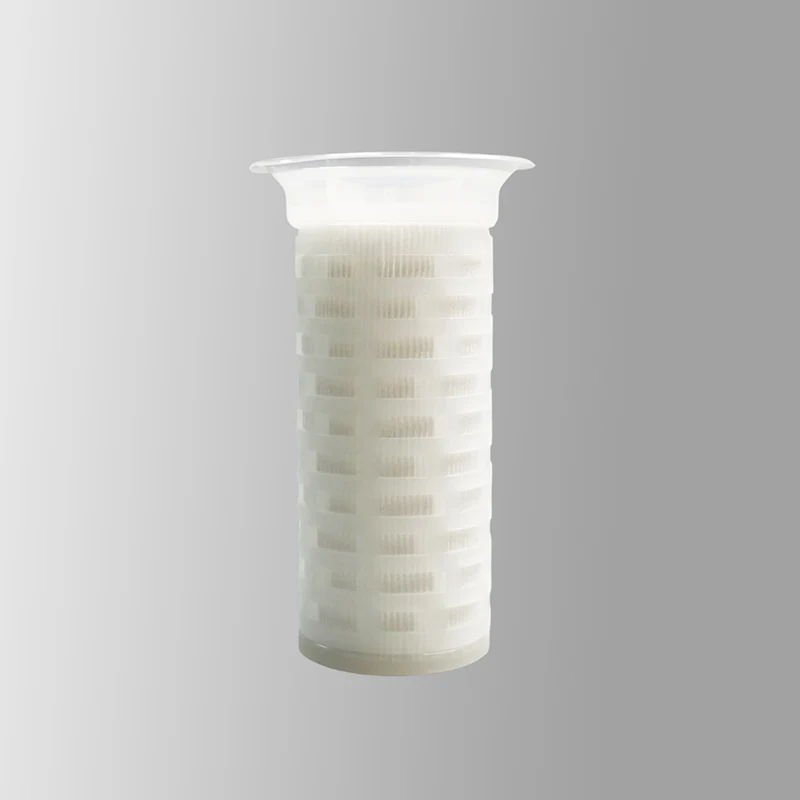Understanding Sterilisation Filtration: The Role of PES Mini Filter Cartridges
2024-12-16
Sterilisation filtration is an essential process in industries ranging from pharmaceuticals and biotechnology to food and beverage production. Among the various filtration tools available, Polyethersulfone (PES) mini filter cartridges have gained widespread popularity for their efficiency and reliability. This article delves into the science behind sterilisation filtration and explores how PES mini filter cartridges contribute to achieving sterility across various applications.
What is Sterilisation Filtration?
Sterilisation filtration is a physical process that removes microorganisms and particulate contaminants from liquids and gases without altering their chemical properties. Unlike heat-based sterilisation methods, filtration is non-invasive and ideal for temperature-sensitive products. This method is indispensable in processes where maintaining product integrity is critical, such as:
- Pharmaceutical manufacturing: Ensuring the sterility of injectable drugs and vaccines.
- Food and beverage processing: Filtering microbial contaminants from liquids like milk, juice, and beer.
- Biotechnology research: Protecting cell cultures and reagents from contamination.
The Advantages of PES Mini Filter Cartridges
Polyethersulfone (PES) is a hydrophilic membrane material known for its excellent chemical resistance and low protein-binding properties. PES mini filter cartridges are designed for small-scale applications where high performance and reliability are paramount. Their advantages include:
1. Superior Filtration Efficiency: PES membranes provide absolute-rated filtration, effectively removing particles and microorganisms down to 0.2 microns, the standard pore size for sterilisation.
2. High Throughput and Flow Rates: PES membranes are designed for minimal resistance, allowing for rapid filtration of liquids and gases without compromising sterility.
3. Chemical Compatibility: These filters can withstand exposure to a wide range of chemical solutions, making them versatile for different applications.
4. Low Extractables: PES membranes ensure that filtered liquids or gases remain uncontaminated by impurities leaching from the filter material.
5. Compact Design: Mini cartridges are ideal for small-scale processes, offering the same reliability as larger filters while saving space and resources.
Applications of PES Mini Filter Cartridges
1. Pharmaceutical Industry:
PES mini filter cartridges are used in:
- Sterilising media and buffers.
- Filtering injectable drugs and ophthalmic solutions.
- Protecting critical equipment from contamination.
2. Food and Beverage Industry:
In this sector, PES mini filters ensure the microbial safety of products such as:
- Bottled water and soft drinks.
- Wine and beer.
- Liquid dairy products.
3. Laboratory Research:
PES mini cartridges are crucial for maintaining sterile conditions in experiments by:
- Filtering reagents and cell culture media.
- Protecting analytical instruments.
- Ensuring the sterility of air and gases.
Maintenance and Best Practices
To maximize the performance and lifespan of PES mini filter cartridges, it’s essential to follow these maintenance tips:
1. Pre-Filter Liquids: Using a pre-filter can help remove larger particulates, extending the life of the sterilising filter.
2. Monitor Pressure Drops: Regularly check for pressure changes during filtration. An increase in pressure may indicate clogging or fouling.
3. Perform Integrity Testing: Routinely test the filter’s integrity to ensure it continues to meet sterility requirements.
4. Replace Timely: Replace the cartridge as recommended by the manufacturer to avoid compromising sterility.
PES mini filter cartridges are indispensable tools for achieving sterility in critical applications. Their combination of high filtration efficiency, chemical compatibility, and compact design makes them ideal for small-scale processes across various industries. By integrating these filters into your operations and adhering to proper maintenance protocols, you can ensure the consistent production of sterile and high-quality products.



